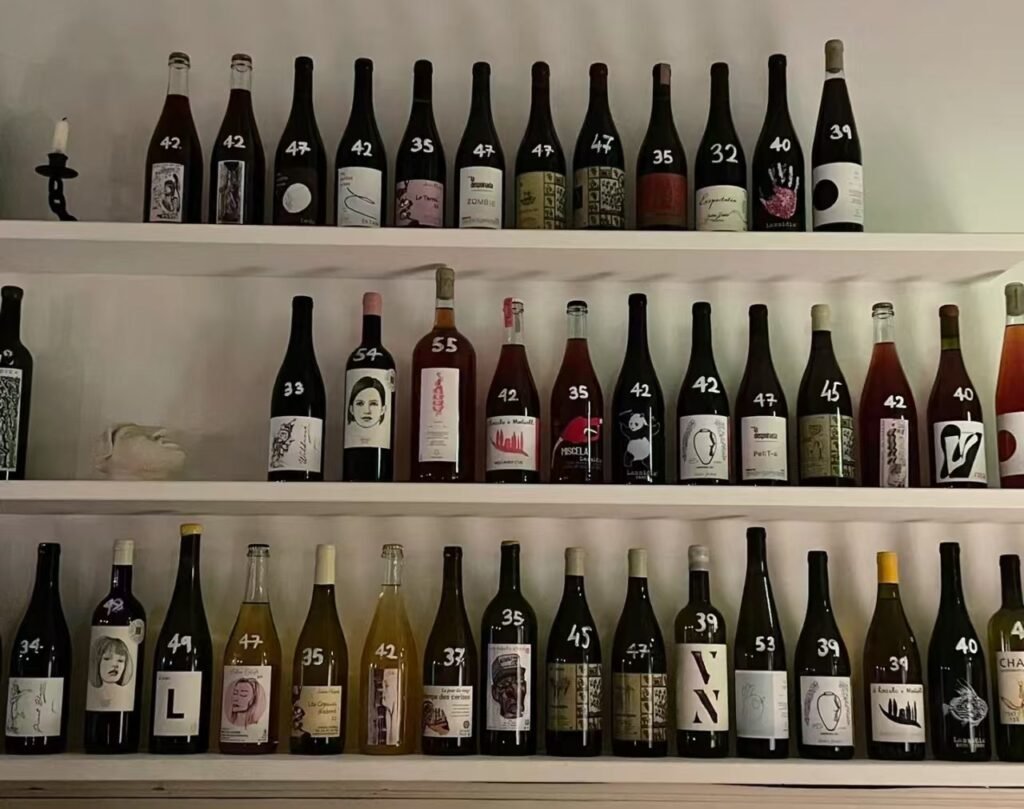Did you know that searches for wine terminology have increased by 156% since last year? As someone who remembers feeling overwhelmed by all the unique terms in the wine world, I’m here to help! “What exactly does ‘pet-nat’ mean?” and “Why do people keep talking about ‘skin contact’?” – if you’ve asked these questions, you’re not alone. Let’s decode these terms together!
1. Pet-Nat (Pétillant Naturel)
Think of pet-nat as the fun, unpredictable cousin of champagne! This lightly sparkling wine gets its bubbles from a single, natural fermentation in the bottle. Unlike champagne, which undergoes a second fermentation with added sugar and yeast, pet-nat is bottled before the initial fermentation is complete. The result? A playful, often cloudy sparkler that’s typically lower in alcohol and showcases pure fruit flavors.
Fun fact: This method, also called “méthode ancestrale,” actually predates champagne-making techniques!
2. Skin Contact
Ever heard of orange wine? That’s skin contact in action! While most white wines separate grape juice from skins immediately, skin contact wines let them mingle for days or even months. This extended contact creates deeper colors, tannins, and complex flavors. Think of it like brewing tea – the longer the steep, the more intense the result.
3. Mother Nature Yeast (Indigenous Yeast)
Instead of adding commercial yeast packets, these wines rely on the wild yeasts naturally present on grape skins and in the vineyard environment. It’s like making sourdough bread using wild bacteria instead of store-bought yeast. These native yeasts often create more complex, terroir-driven flavors, though fermentation can be slower and less predictable.
4. Zero-Zero
No, it’s not a secret agent code! Zero-zero refers to wines made with zero additions and zero subtractions. That means no added sulfites, no filtering, no fining agents – nothing added or taken away. It’s the purest expression of grapes transformed into wine.
5. Col Fondo
Love Italian Prosecco? Col fondo is its ancestral cousin! This traditional method leaves the lees (dead yeast cells) in the bottle, creating a slightly cloudy, complex sparkling wine with a subtle bread-like character. The term literally means “with the bottom” in Italian, referring to the sediment that collects at the bottom of the bottle.
6. Qvevri
These large, egg-shaped clay vessels from Georgia (the country, not the state!) have been used for winemaking for over 8,000 years. Buried underground for temperature control, qvevri create unique wines through extended skin contact and natural fermentation. It’s like a combination of fermentation vessel and aging barrel, all in one ancient package!
7. Glou-Glou
Here’s a fun one! Glou-glou describes light, easy-drinking wines that are so delicious, you hear the “glug-glug” sound as you happily pour another glass. These wines typically have lower alcohol content, minimal tannins, and bright fruit flavors. Think of them as the ultimate “picnic wines.”
8. Vin de Soif
Similar to glou-glou, vin de soif translates to “thirst-quenching wine.” These fresh, vibrant wines prioritize drinkability over complexity. They’re perfect for casual drinking and typically show bright acidity and lower alcohol levels. Imagine a refreshing lemonade on a hot summer day – that’s the vibe these wines aim for!
9. Amphora
Like their Georgian cousins (qvevri), amphoras are clay vessels used for fermentation and aging. These vessels, with roots in ancient Rome and Greece, allow minimal oxygen exposure while imparting subtle mineral notes to the wine. Modern winemakers are reviving this ancient practice, creating wines that bridge the gap between historical and contemporary styles.
10. Mouse/Mousiness
This one’s a bit technical but important! Mousiness is a fault that can occur in low-sulfite wines, creating an unpleasant taste often described as “mouse cage” or “popcorn.” Interestingly, not everyone can detect it, and it might not be noticeable until the wine hits your tongue. Consider it the wine equivalent of being able to smell asparagus in, well… you know!
Tips for Exploring These Terms in Real Life:
Finding and Tasting:
• Visit specialized wine shops and ask for examples of each style
• Start with pet-nat or glou-glou wines as your introduction
• Join tasting groups focused on traditional winemaking methods
• Take notes about which styles you enjoy most
• Don’t be afraid to ask questions – wine professionals love sharing knowledge!
Storage and Serving:
• Keep these wines at cool, consistent temperatures
• Serve most styles slightly chilled (55-60°F)
• Handle bottles gently, especially if they contain sediment
• Stand up sediment-heavy bottles for a day before serving
• Trust your palate – everyone experiences these wines differently
Understanding these terms opens up a whole new world of wine enjoyment! Remember, there’s no need to memorize everything at once. The joy comes from exploring and discovering which styles speak to your palate. Whether you’re intrigued by the ancient methods of qvevri or the playful bubbles of pet-nat, each term represents a unique approach to winemaking that’s worth exploring.
Ready to start your journey? Grab a bottle that features one of these terms and dive in! The best way to learn is by tasting, so gather some friends, share some glasses, and don’t forget – the only “right” opinion about a wine is your own. Cheers to your wine adventure!
Wine appreciation is a journey, not a destination. Save this guide for reference as you explore, and most importantly, have fun discovering these different styles and techniques. Your perfect bottle is out there waiting!


